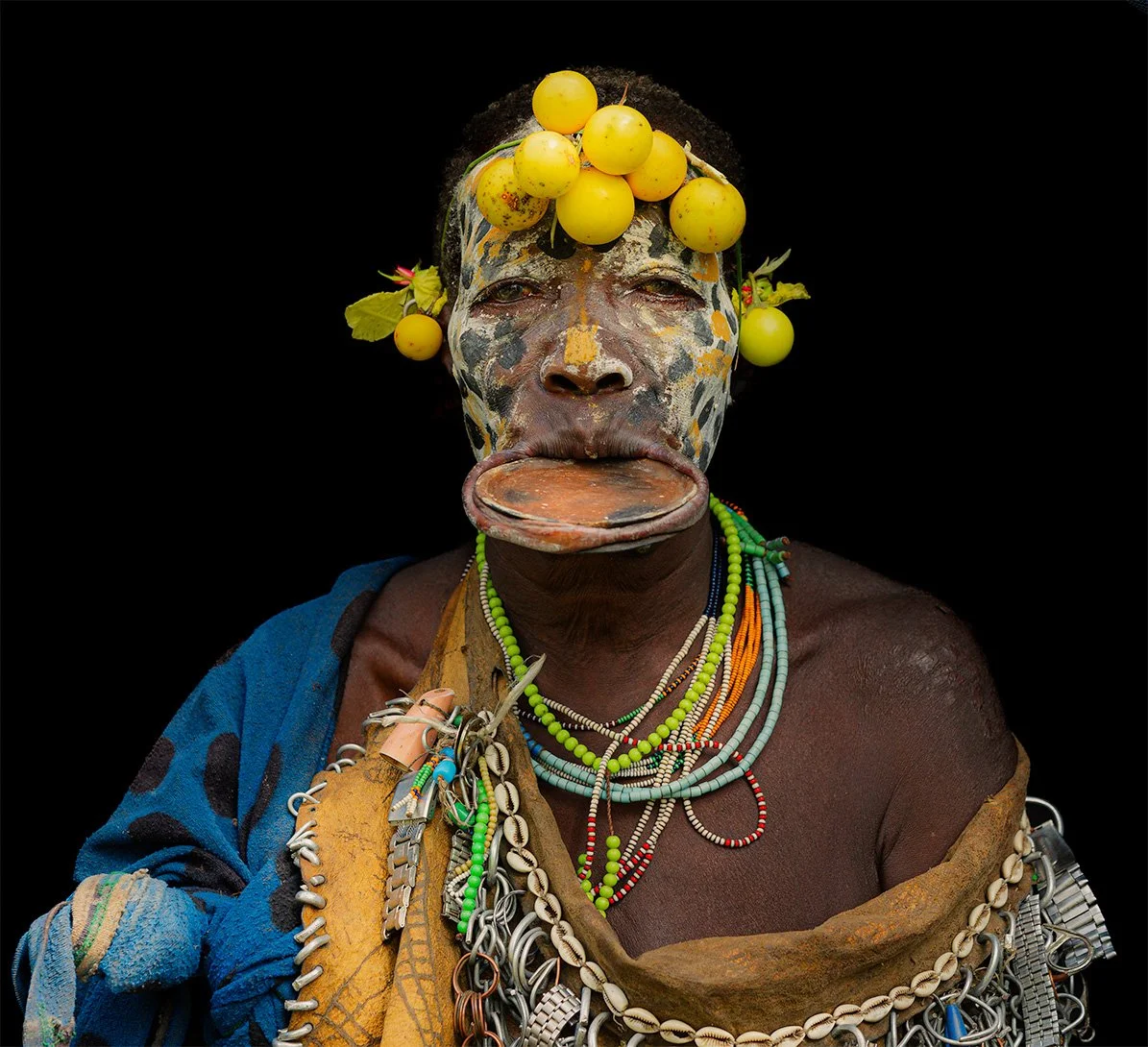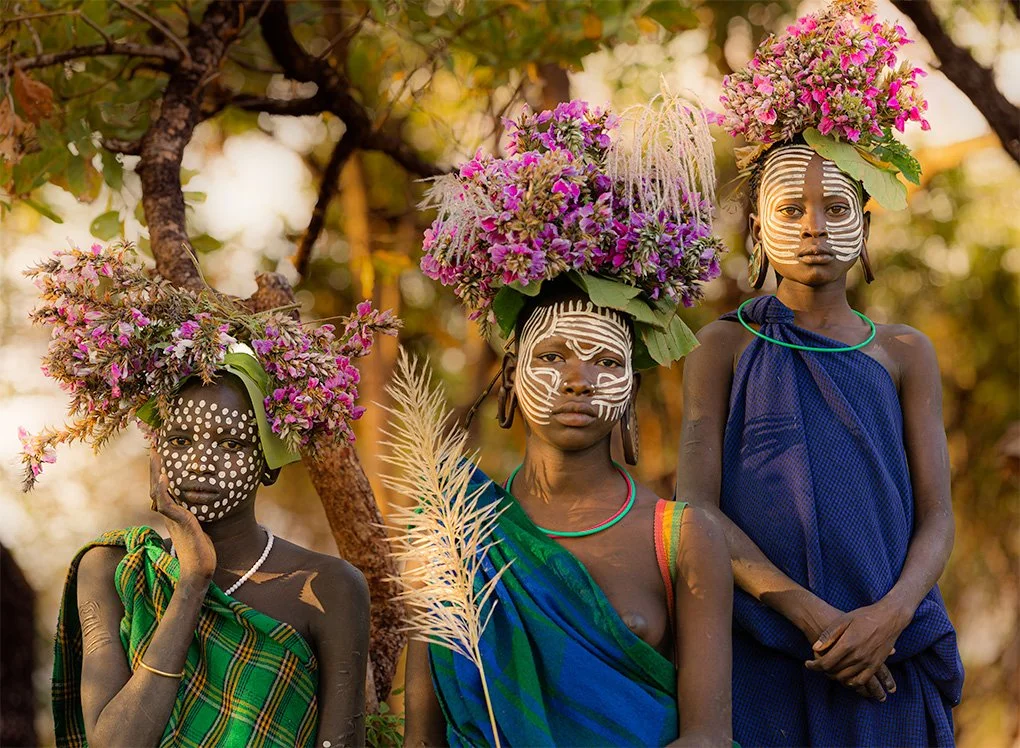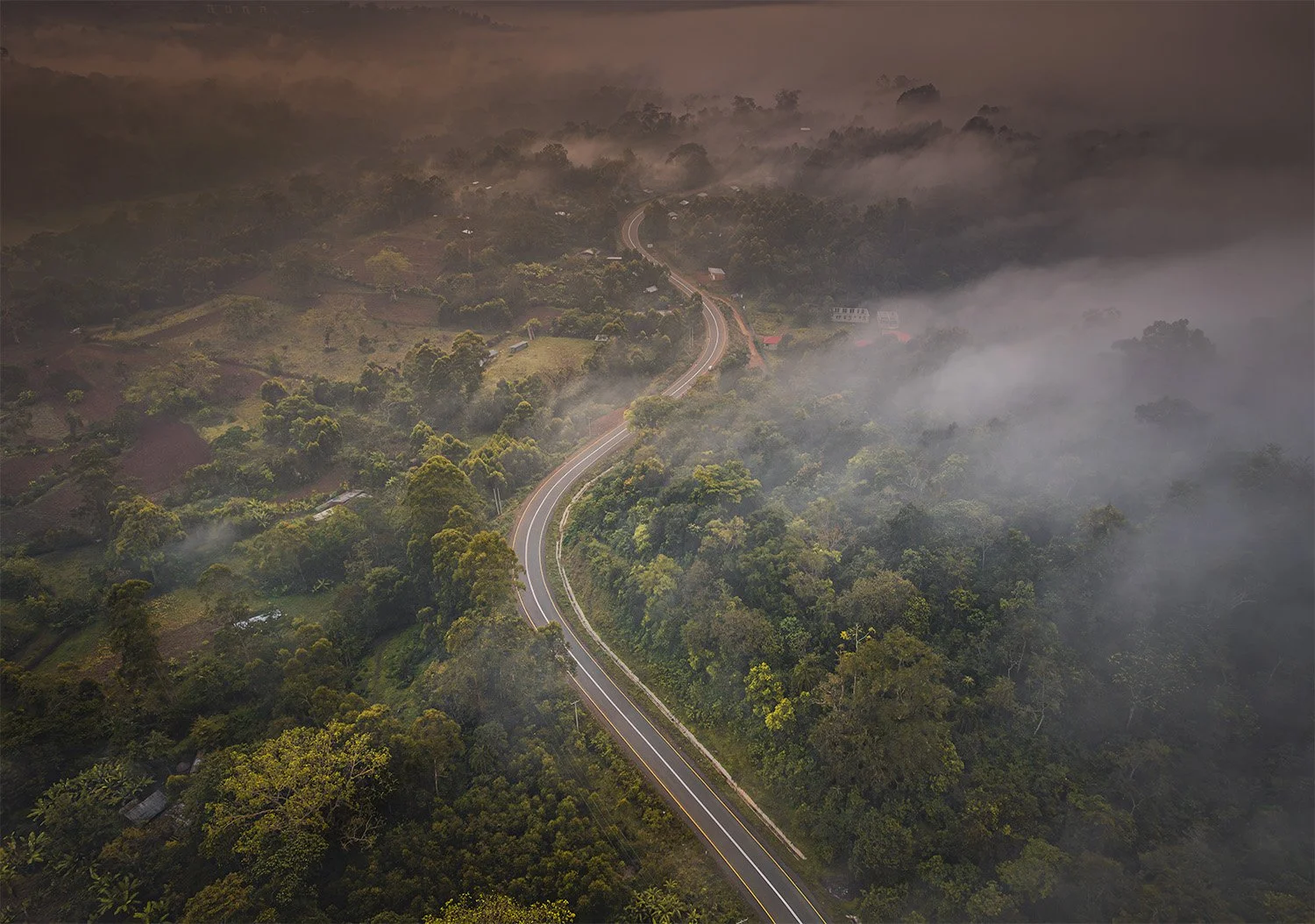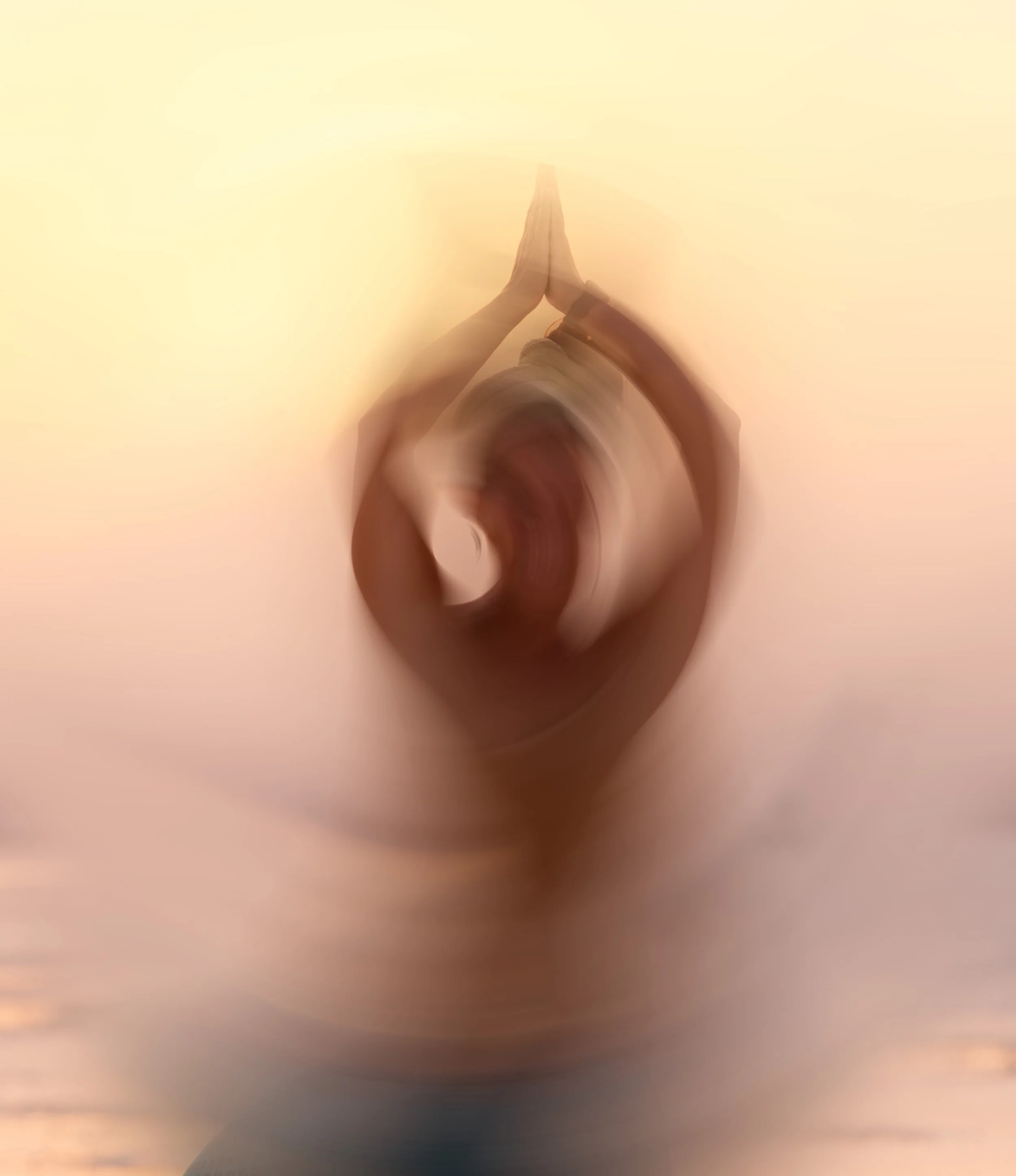How to find inner peace through inner travel?
© Supriya Samal
I sat huddled together with the Roras (junior elders) of Suri tribe, in a makeshift shelter in the Ethiopian Omo valley as dusk fell, listening to rain drumming on the canopy of acacia leaves. The wet earth smelled of honey and smoke from the once burning campfire.
All around me stretched the primordial dark endlessly. My heart pounded with anxiety – every crack of a branch or rustle of wind felt magnified in the silence. In that moment, I realised I was on a different kind of pilgrimage—one that would take me not just across continents but deep into the terrain of my own mind.
As we sat together for the last meal of the day, the rain grew heavier. The temporary shelter began to leak. We rushed to the dry place of the shelter holding the meal in one hand and another covering our head. Cold droplets trickled down my spine.
The animals of the night – the hoot of an owl, the distant howl of hyenas – felt terrifying. Fear rose in my chest, and yet the comfort of knowing that I am not alone brought me some strength. So, instead of panicking, I began to meditate on food, sound, and breath. I touched and tasted every morsel of food travelling from my mouth into the stomach, listened to all sounds without any pre-conceived notions and judgement, focused on the rhythm of breath as it became one with the surroundings.
Slowly, tension and doubt seemed to wash away. By the time the rain eased around midnight, a profound calm had settled in me. In that vulnerable moment, I discovered a veil of darkness lifting from my heart just like the clear star lit sky after the rain. I found a well of inner peace that I hadn’t known was there.
Dusk at Omo valley © Supriya Samal
Stripped to the Essentials
The next morning, I woke up stiff with the dawn’s pink light edged over the horizon. Cocooned now in the golden light of sunrise, I walked barefoot through wet grass of the forest to join my tribe hosts for porridge. I was staying outside a Suri tribe village, close to the Omo river.
The chief’s wife brought us steaming bowls of millet. The children from the village were wearing brightly coloured flowers. They darted through the grasses towards the river. They sat by the river side, some climbed upon the trees, laughing and painting each other with crushed rocks and water.
There were no modern comforts – no phone, no bed, no running water – only a few changes of clothes, my gears and a sleeping bag. Yet I felt more alive living among the tribes than ever. The discomforts of travel had mysteriously become gifts.
Each hardship stripped away a layer of my usual urban armor. Away from all that, I found myself unexpectedly present. I noticed small wonders even better: the softness of the sunlight, the sound of the river flowing through the valley, the endless laughter of children, their mesmerizing way of painting and making each other look beautiful, the sound of a cowbell echoing through mist.
In the absence of familiar security, I connected more deeply with who I was. This is the essence of being an inner traveller – journeying not just through landscapes, but through one’s own consciousness.
Beautiful Sunrise in Omo Valley © Supriya Samal
Tribal Wisdom and Holistic Health
Omo tribe elders © Supriya Samal
Living among the Suri tribe also introduced me to their worldview: humans as part of the ecosystem, a delicate balance of body, mind, and spirit. Around the communal fire that night, an elder spoke of a concept of harmony that reminded me of Ayurveda’s teaching that complete health is the balance of mind, body and soul.
In fact, Ayurveda – the ancient “science of life” from India – teaches that true wellness is holistic, caring equally for mental, spiritual and social wellbeing. This wisdom seemed written into the rhythm of the tribe’s lives: their work was physical and attuned to nature, their meals simple and nurturing, and they made time for singing, dancing and storytelling.
I realized that in this harsh environment, techniques like yoga and mindful breathing were not alien detours but essentials. So, the next morning before dawn, I found a quiet spot and did a few Hatha yoga movements facing the river.
As I moved, I felt my frazzled nerves settle. Research backs this up: yoga’s emphasis on breathing and mindful movement is known to reduce anxiety and depression. Just as lifting weights builds muscle, yoga “strengthens parts of the brain that play a key role in memory, cognitive function, attention, awareness and language,” according to Harvard experts.
At midday, I tried some Ayurvedic self-care I’d read about on the journey: garshana (dry brushing) before showering, and a few drops of neem oil that I have brought on mosquito bites. Afterwards, I went to bathe in the river. In that slow flowing river water, I immersed myself from head to toe. I felt an invigorating sense of sensory immersion. These small rituals for the next 3 days– nurturing body and mind – grounded me.
My journey through Ethiopia tested each element of my being. By creating space for them deliberately, I found more energy and clarity to enjoy the moment.
A young boy from Omo tribe © Supriya Samal
Mind-Body Practices in the Wilderness
During the trip, I also practiced meditation and visualization daily. Everyday near the river, I sat cross-legged on a rock and watched the river current, or closed my eyes to focus on breath and sometimes I even recited calming mantras.
When anxiety flared – say, when I heard rustle in the woods or felt overwhelmed by the day’s heat – I turned to visualization: picturing a safe place or someone I love, tracing each detail in my mind’s eye. For me, imagining myself hugging my partner or sitting near a sunny beach, for example, usually brought immediate relief.
This technique is more powerful than it sounds. Psychologists find that visualization can “increase optimism and other positive emotions,” and even help regulate negative emotions like anxiety. In effect, it reheats inner calm just as surely as yoga asanas do on the body. It wasn’t just ancient wisdom – modern science was confirming what I felt.
Journaling and reflecting after each day turned out to take my inner travel even one step further. In fact, studies of tourists show that reflection transforms experiences into personal growth. One study found that self-reflection after travel helped people “extract life’s purpose and meaning” from their adventures.
Indeed, I noticed that evenings spent chatting with fellow travellers about what we’d seen – would often leave me with a deeper sense of purpose. I felt my worldview shifting: little stresses back home suddenly seemed trivial, and my priorities felt more aligned with kindness and curiosity.
The Science of Inner Peace
There’s ample research on travel and mental wellness that backs my story. For example, a survey of adults found that 80% of people say travel improves their general mood and outlook on life, and 75% report it helps them reduce stress.
One health expert explains that trips give people “more opportunities to detach from their work environment, to experience new things, and to control what they want to do,” all of which boosts subjective well-being. Indeed, I felt this: taking a break from my modern routine in Ethiopia recharged me, even before the plane left Addis Ababa.
Travel often goes hand-in-hand with nature and novelty, and these are precisely the triggers of transformation identified by scholars. One recent study of travelers noted that “introspection, unity with nature and others, novelty, and aesthetic experiences” are the main catalysts for personal change.
My own trip ticked all those boxes: introspection came with each solo meditation, unity with nature happened under the starry sky, novelty was everywhere from songs to laughter, and the aesthetic beauty of the Omo Valley sunrises moved me. It is an amazing thing to taste the “rest and digest” state of our nervous system, to see the possibility of inner peace not conditional to outside circumstances.
Embracing Minimalism
Minimal of Omo tribes © Supriya Samal
Being an “inner traveller” meant learning from these tribes how to live with less. I realized that all my needless “stuff” from home – redundant gadgets, cluttered wardrobe, choices of food – had distracted me from living a simple life in tandem with nature.
A burgeoning body of research says the same: adopting a minimalist lifestyle – clearing clutter, focusing on essentials – often boosts well-being. One study found that decluttering not only conserves resources and lowers waste but “giving them more room and time, which will improve their well-being because they will have more time for their family and interests.”.
When I returned to my normal life, I chose to carry this lesson: wellness starts from within, not from having more things. I Streamlined my schedule and home, hence more time for yoga, meditation, journal, walks at sunset, and more space for true human connection.
Actionable Reflections: Bringing the Journey Home
Lush Omo valley © Supriya Samal
My Ethiopian journey proved that wellness truly starts from within. Now back in my city life, I’ve tried to carry those lessons into daily routines. Here are some of the practices I bring home, and that any inner traveller might adopt in everyday life:
Daily meditation or breathwork – Even 10 minutes of mindful breathing can reset stress hormones and calm the nervous system. I wake up before sunrise everyday and do my morning meditation. Some days it’s breath or sound or visualization or body awareness etc.
Declutter and simplify – I’ve taken to evening walks to clear my head instead of scrolling news on my phone. At home, I’ve decluttered my workspace and closet.
Digital Detox: I have allocated 2 hours after waking up and prior to sleep to disconnect from digital devices. This allows time for introspection.
Regular yoga or movement – I do Hatha and Yin yoga during dawn or dusk. Just as I did on the trip, this practice in my living room anchors me with the promise that the mind follows the body into calm.
Visualization for goals and calm – Whenever a work deadline or modern day hustle bustle stresses me out, I close my eyes and visualize a peaceful scene (sometimes that Ethiopian valley) or focus on the shapes and colors of objects. Visualization techniques are shown to boost optimism and reduce anxiety.
Travel (even mini-breaks) – I plan local day trips: a hike in a nearby mountain, a weekend lake trip, or even a short nature staycation. Science says even a short getaway can reset your mood and sleep. Each return to nature renews that inner calm I discovered abroad.
Reflection journaling – After any trip or significant day, I journal about what moved me. By reflecting, I tap into the same growth process that researchers found turns fleeting emotions into lasting meaning.
The Journey Within Continues
Journey within © Supriya Samal
Looking back, Ethiopia was only the beginning of a lifelong exploration. The vast skies and tribal kindness taught me that true strength comes from stillness inside. I returned home with muddy boots and a lighter heart.
The questions I brought back – about purpose, compassion, love and simplicity – are guiding me now. In the hustle of work and routines, I’ve realized that at home; seeking solitude in nature, caring for my body with movement, and observing each moment with gratitude keeps the inner journey alive. Each day is another chance to travel inward, to explore my own mind with curiosity.
As mystic poet Rumi said and I reminded myself while on that trip, “As you start to walk out on the way, the way appears”. I went to Ethiopia to take photos of tribes, but I returned as an inner traveler in my heart. The trip planted a seed of lasting change – one that will grow in everyday life, long after the rain-soaked nights and mountain trails are past.
The journey toward inner peace is endless, but as I’ve learned, I don’t have to be afraid of the dark. I have my inner compass, my breath, and the knowledge that wherever I go next, “wellness starts from within.”








